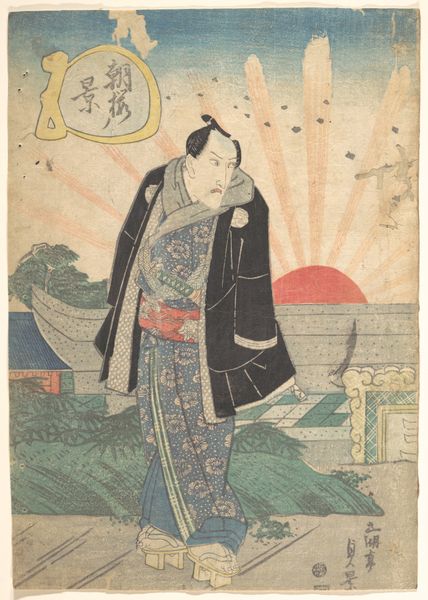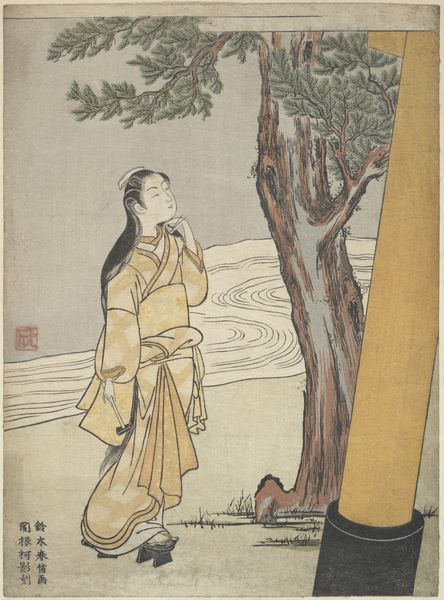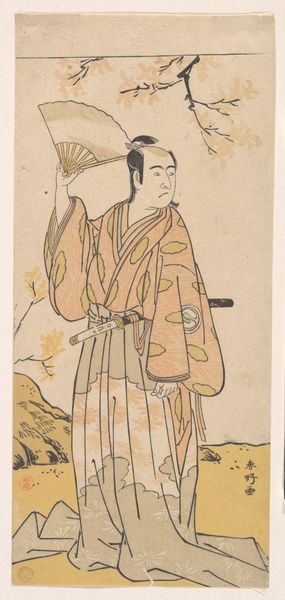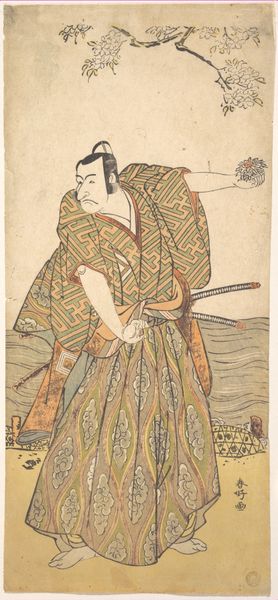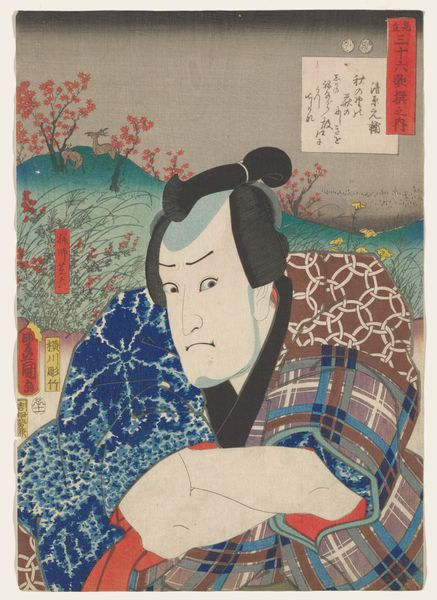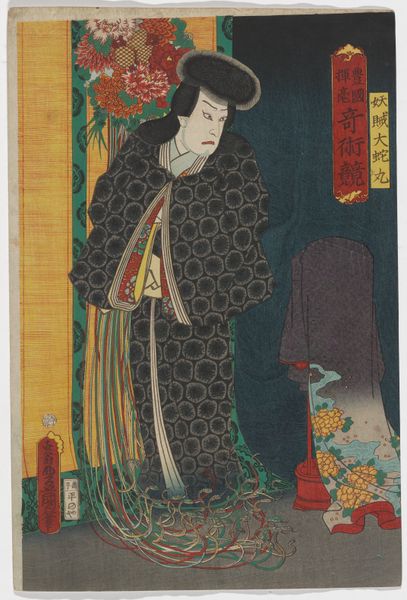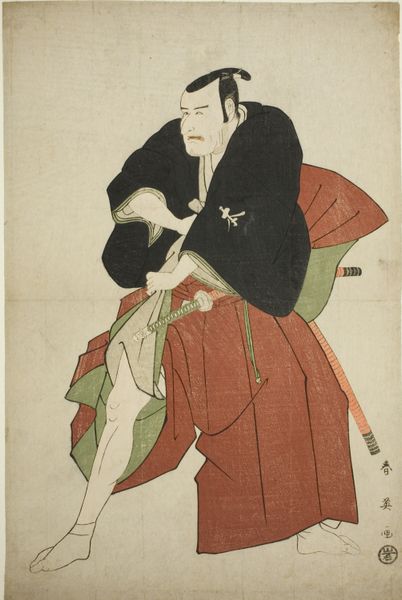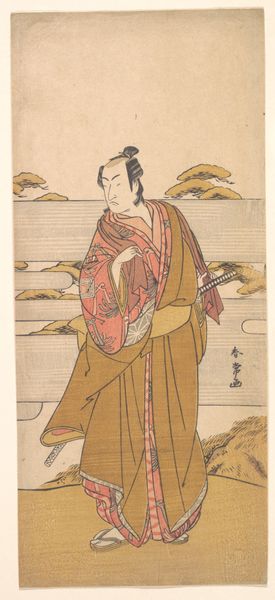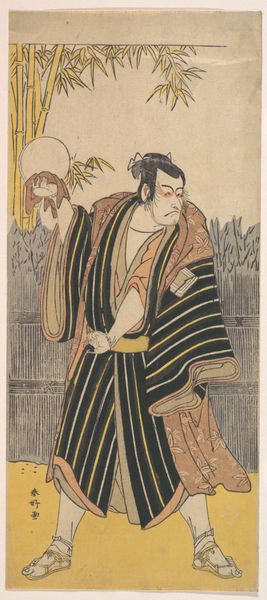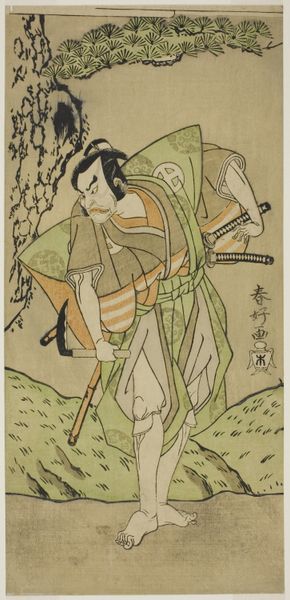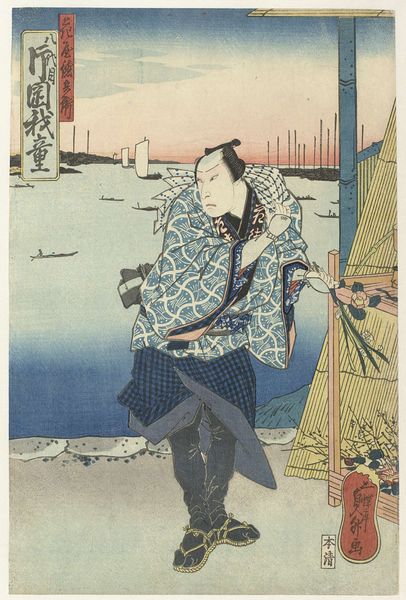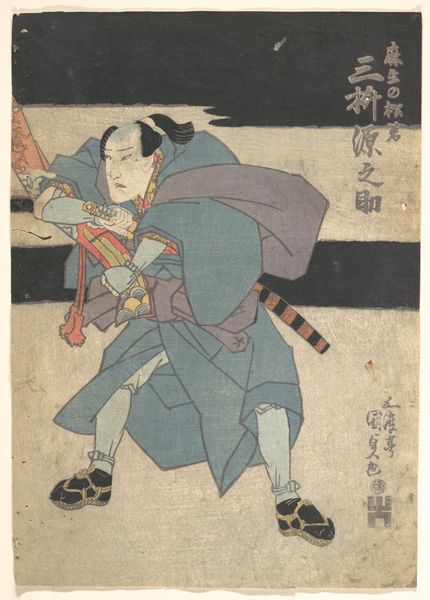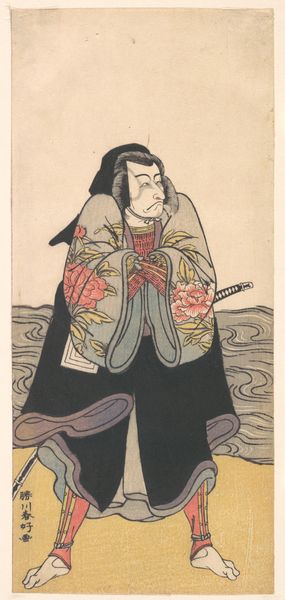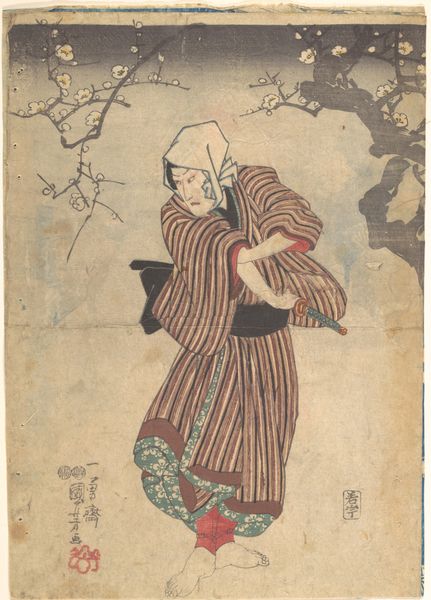
print, woodblock-print
#
portrait
#
tree
#
toned paper
# print
#
asian-art
#
landscape
#
flower
#
ukiyo-e
#
figuration
#
woodblock-print
#
men
Dimensions: Image: 13 5/8 × 9 1/2 in. (34.6 × 24.1 cm)
Copyright: Public Domain
Editor: Here we have Utagawa Sadakage’s “Print,” likely a woodblock print, created sometime between 1834 and 1866. It shows a man in traditional dress, standing beneath a blossoming tree. There’s a quiet, contemplative mood to the image. What do you see in this piece that might go beyond that initial impression? Curator: What immediately strikes me is how this Ukiyo-e print captures the complexities of identity and social expectations within the Edo period. While seemingly a serene landscape portrait, the work engages with potent themes of performativity and societal constraints. Note the figure's elaborate clothing, contrasted against the natural backdrop. How might this juxtaposition reflect the tension between individual expression and enforced social roles? Editor: That's interesting. I hadn’t really thought about it in terms of tension. It just seemed like a nice portrait of a person in a landscape. Curator: Exactly. What could this carefully constructed image tell us about the societal pressures on men in that era, regarding presentation and public image? Consider how clothing functions as a signifier of status. Editor: So, it's not just a man enjoying the scenery, but a commentary on the societal expectations he's forced to adhere to. Almost like a stage play where he is always in character? Curator: Precisely. And the fact that it's a print, a medium for mass consumption, invites us to consider how these ideas were disseminated and reinforced throughout society. Editor: Wow, I will never look at these Ukiyo-e prints the same way again. Curator: Indeed, hopefully you now feel inspired to unpack the layers of history, identity, and power woven into every detail of artworks we see, transforming how you understand their meanings.
Comments
No comments
Be the first to comment and join the conversation on the ultimate creative platform.
